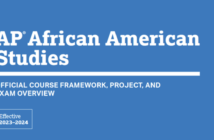The Article below was published in Vol. 136, Issue 1 of the Lake Forest College Stentor on September 18, 2020.
Kobena Amoah ’23
Staff Writer
It had previously been thought that organized labor had been confined to the dustbins of history; however, much of the recent developments in relation to the pandemic have altered my thoughts about the issue. Granted, while organized labor has more reason than other groups to feel ambivalent about the developmental path of the coronavirus, it seems rather too obvious that this group has taken on a new role — a role I define as synonymous with defiance. Most obvious is the central conflict between teachers unions and school districts regarding the issue of school re-opening. Although both factions represent radically opposite sides on the issue of re-opening, it would be superficial to suggest any side’s proposed solution fundamentally solves the immediate problem facing the educational system today. I have been fascinated by the development of the American worker status and, in this article, it is my goal to consider the significant changes, or lack thereof, that might result from the post-pandemic labor economy.
The striking resurgence of the labor question has undoubtedly been a consequence of the coronavirus pandemic. As the nation moves slowly in the direction of a reopening, this process has re-advanced questions surrounding the significant roles for labor. It is from this reopening process that apparent frictions between labor and management have emerged. This is especially obvious with respect to teachers unions. On July 20, 2020, according to NBC, a lawsuit was filed by the Florida Education Association, the state’s largest union, “to halt the governor’s reopening edict.” On August 19, 2020, according to WBUR, “three of the [Massachusetts’] largest teachers’ unions — AFT Massachusetts, Boston Teachers Union, and Massachusetts Teachers Association — rallied outside of the State House to demand that the school year start remotely.” These are just two of several stories of union pushback against any reopening.
Given the actions of teachers unions, it would be all too easy to repudiate their actions. However, the unprecedented nature of the virus has made important their considerations if we are to find solutions to our immediate problems. Perhaps, the biggest obstacle to finding a solution lies not in the leverage wielded by these organizations but rather the bureaucracy existent in Washington. As it stands, the staggering inefficiency of the political administration leads me to question their ability to act in the interest of the people. Its supposed patriotic commitment is an embellished fad that could ultimately act to the detriment of the American people.
The experience of prevailing labor relations fed into my interest for discussing this controversial issue of reopening in the context of Unionism. As a matter of reason, I by no means suggest the goal of this “modern unionism” is to seek any radical reorganization of corporate-labor relations. There, perhaps, is not even any underlying agenda. The most important takeaway from this piece is the current labor dispute is transitory. While we are all too aware of the transformative nature of the pandemic, the prospect of achieving any positive change lies in overcoming any internal divisions.
The “labor question” is up again, enclosed in a much broader sense of social change. However, my feeling is that labor has been all too conservative in raising the challenges facing the post-pandemic era. As much as we pay attention to the considerations of the government, be it federal or state, we should pay attention to labor, as well. This is not a consideration of alternatives but rather realizing they are all contributory factors to our social fabric. Whether it will be beneficial, only time will tell.


